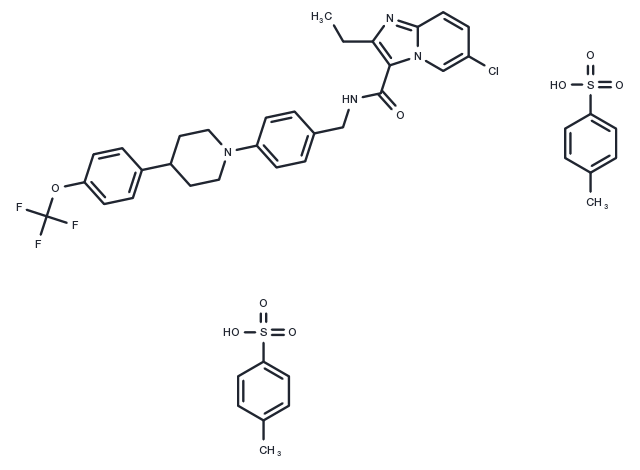Powder: -20°C for 3 years | In solvent: -80°C for 1 year


Q-203 Ditosylate, also known as Q-203, is a mycobacterium tuberculosis protein potentially for the treatment of tuberculosis. The optimized IPA compound Q203 inhibited the growth of MDR and XDR M. tuberculosis clinical isolates in culture broth medium in the low nanomolar range and was efficacious in a mouse model of tuberculosis at a dose less than 1 mg per kg body weight, which highlights the potency of this compound.

| Pack Size | Availability | Price/USD | Quantity |
|---|---|---|---|
| 25 mg | Inquiry | $ 1,520.00 |
| Description | Q-203 Ditosylate, also known as Q-203, is a mycobacterium tuberculosis protein potentially for the treatment of tuberculosis. The optimized IPA compound Q203 inhibited the growth of MDR and XDR M. tuberculosis clinical isolates in culture broth medium in the low nanomolar range and was efficacious in a mouse model of tuberculosis at a dose less than 1 mg per kg body weight, which highlights the potency of this compound. |
| Synonyms | Q203, Q-203, Q 203 |
| Molecular Weight | 901.41 |
| Formula | C43H44ClF3N4O8S2 |
| CAS No. | 1566517-83-6 |
Powder: -20°C for 3 years | In solvent: -80°C for 1 year
You can also refer to dose conversion for different animals. More
bottom
Please see Inhibitor Handling Instructions for more frequently ask questions. Topics include: how to prepare stock solutions, how to store products, and cautions on cell-based assays & animal experiments, etc.
Q-203 Ditosylate 1566517-83-6 Q203 Q 203 Ditosylate Q203 Ditosylate Q-203 Q 203 inhibitor inhibit
